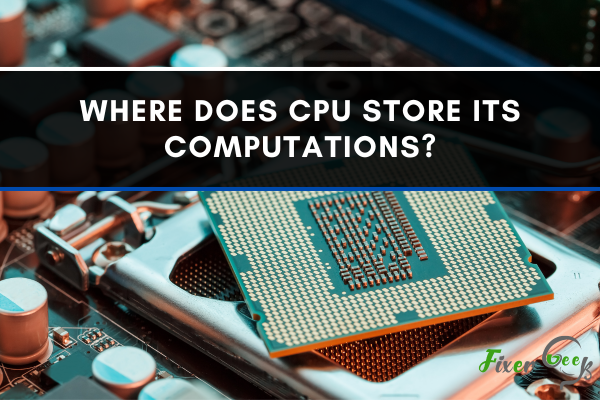Location CPU Store its Computations
The CPU stores its computations in its internal memory, usually called RAM (Random Access Memory). This is where the CPU stores and retrieves data and instructions.

Location CPU Store Data And Instructions
The CPU does not permanently store data and instructions. Instead, the CPU stores data and instructions in the computer's hard drive or other storage devices. This is where the data and instructions are permanently stored.
Are CPU Instructions Stored in RAM?
Yes, CPU instructions are stored in RAM. The CPU uses RAM to store and retrieve instructions and data.
Use of ROM
ROM (Read-Only Memory) stores permanent data and instructions necessary for the computer to start up and run. This includes the basic instructions for the computer's hardware and the software that controls it. ROM is non-volatile, meaning it retains its contents even when the power is turned off.
Ways Instructions Stored in CPU
Instructions are stored in a CPU as machine code, a set of binary numbers that the CPU can understand. The instructions are stored in the CPU's memory as registers or RAM. The instructions are then fetched from memory by the CPU and executed.
Memory Inside CPU
The memory inside a CPU is typically made up of RAM (Random Access Memory) and ROM (Read-Only Memory). RAM is volatile, meaning it needs the power to retain its contents. It stores instructions and data that the CPU needs to access quickly. ROM is non-volatile, meaning it retains its contents even when the power is turned off.
Way a CPU Access Memory
The CPU accesses memory by sending out an address on its address bus. The address is sent to the Memory Management Unit (MMU), which decodes it and sends it to the appropriate memory location. The data is then read from the memory location by the CPU.
Where Does CPU Get Data?
The CPU gets data from the system's main memory, typically random access memory (RAM). The CPU can also access data from other sources, such as hard drives, flash memory, and other peripheral devices.
Possibility of CPU to Store Data
The CPU does not store data. It retrieves data from memory and processes it but does not store it. The CPU uses registers to store data during processing temporarily, but this data is not stored permanently.
Possibility of CPU store program
The CPU stores program instructions. The instructions are stored in memory and retrieved by the CPU when needed. The CPU then executes the instructions, which tell it what operations to perform.
Thing Holds Results of Calculations
The results of calculations are typically stored in memory. The CPU retrieves the data from memory, performs the calculations, and then stores the results in memory.
Language : CPU Instructions Stored
No, CPU instructions are typically stored in machine language. Assembly language is a human-readable version of machine language and is used to write programs that can be compiled into machine language for the CPU to execute.